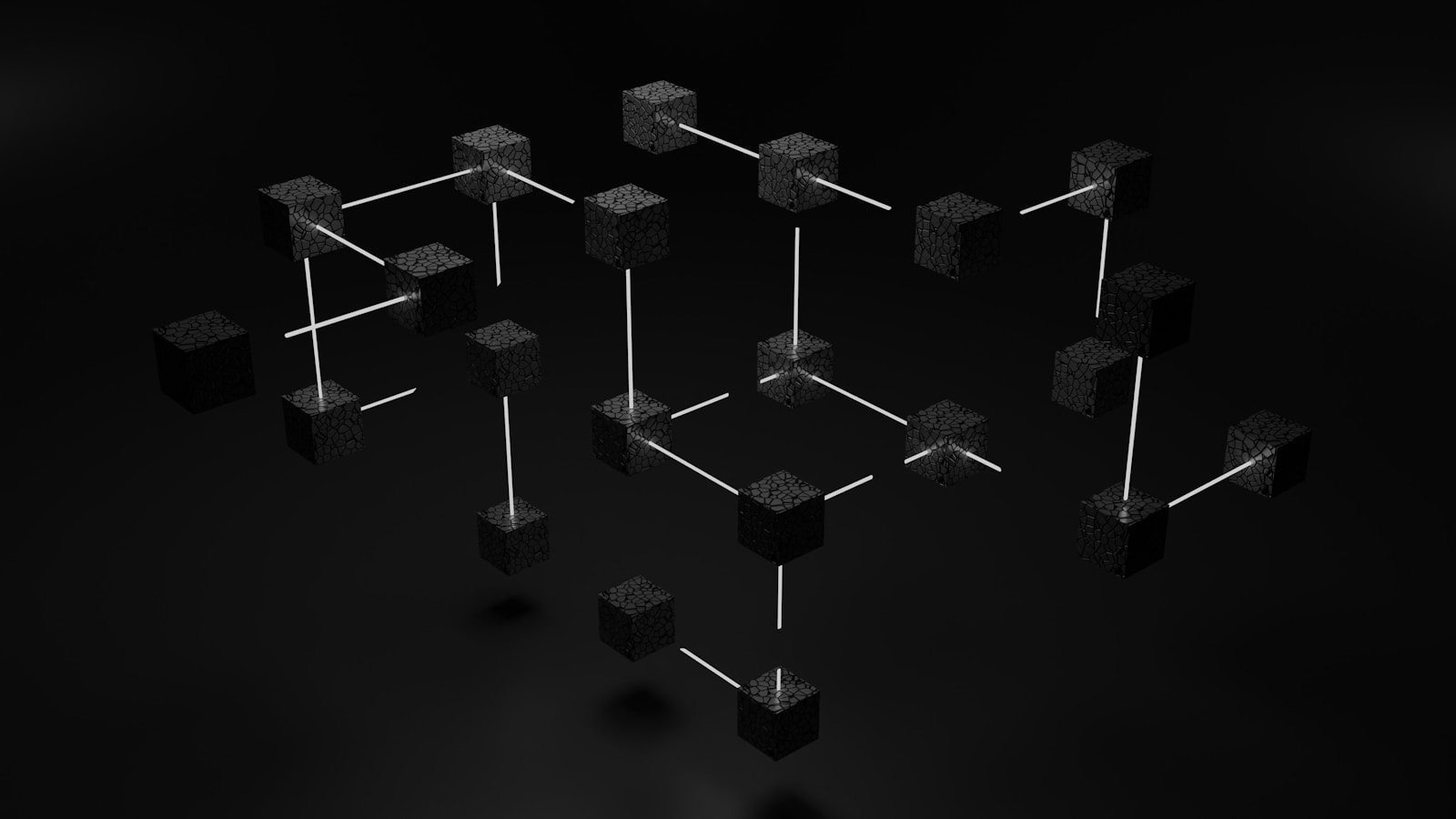Effective management of a decentralized protocol relies heavily on transparent participation methods such as voting. By allowing token holders or network participants to cast votes on proposed upgrades, the system ensures that changes reflect the collective will rather than centralized control. This democratic approach supports smoother implementation of protocol modifications and reduces conflicts among stakeholders.
Voting mechanisms can vary from simple majority rules to more sophisticated quadratic or delegated schemes, each influencing how influence is distributed across the network. Understanding these frameworks helps users recognize their impact on upgrade proposals and overall protocol evolution. Clear guidelines around proposal submission, discussion periods, and quorum thresholds are vital components that maintain integrity throughout the process.
Incorporating structured protocols for stakeholder input creates a balanced environment where innovation coexists with security. When participants actively engage in governance activities, upgrades are more likely to address real needs and improve system resilience. Encouraging broad involvement through accessible tools fosters a genuine form of digital democracy that strengthens trust and longevity within the ecosystem.
Blockchain governance: community decision making
Decentralized protocols rely heavily on democratic principles to facilitate updates and changes. The process of voting within these networks enables stakeholders to participate directly in the evolution of the system, ensuring that upgrades reflect a broad consensus rather than centralized authority. This distributed method of control maintains transparency and aligns incentives among participants, fostering trust and long-term stability.
Each protocol employs unique mechanisms for proposal submission, debate, and approval. For example, Ethereum uses off-chain signaling combined with on-chain execution for certain upgrades, whereas Tezos incorporates formal on-chain voting cycles where token holders cast ballots on amendments. These structures highlight how technical design influences the efficacy of collective input in shaping the network’s future.
The role of democracy in decentralized systems
Democracy within decentralized ledgers manifests as stakeholder engagement through weighted voting rights, often proportional to token holdings or participation history. This approach balances influence with investment risk but raises concerns about plutocracy when large holders dominate outcomes. To mitigate this, some projects integrate quadratic voting or delegated systems aiming to amplify minority voices without compromising security.
For instance, Decred employs a hybrid proof-of-work/proof-of-stake model where ticket holders vote on consensus rule changes and funding proposals. This ensures miners and investors share power while enabling continuous protocol refinement. Understanding these nuanced frameworks is essential for evaluating how well a platform supports equitable participation in its strategic decisions.
- Proposal Submission: Clear processes define who can submit changes and under what conditions.
- Voting Periods: Defined windows allow adequate discussion and participation before finalizing results.
- Quorum Requirements: Minimum voter turnout thresholds prevent low-participation decisions from passing unfairly.
The iteration cycle of improvements depends not only on community consensus but also on technical feasibility and security audits. Governance models incorporating staged deployments reduce risks by testing upgrades in controlled environments before full activation, exemplified by Polkadot’s referenda paired with runtime upgrades validated via WebAssembly modules.
A comprehensive understanding of these governance frameworks empowers participants to engage effectively in network stewardship. By recognizing the balance between inclusivity, security, and efficiency embedded in various protocols’ electoral designs, users can better appreciate how collective input shapes technological progress while safeguarding decentralization principles.
On-chain voting mechanisms
To enable transparent and tamper-resistant input from participants, on-chain voting integrates decision protocols directly into the ledger. This method eliminates third-party intermediaries, allowing stakeholders to cast their preferences on protocol upgrades or parameter adjustments in a verifiable manner. For example, platforms like Tezos use on-chain ballots where token holders lock their assets temporarily to vote on proposed changes, ensuring alignment between influence and stake.
Implementing such systems requires careful consideration of voting power allocation to avoid plutocratic dominance while preserving efficiency. One approach is quadratic voting, which balances influence by making additional votes progressively more costly. Gitcoin Grants utilizes this model to prioritize projects based on collective sentiment without overpowering whales. By embedding these mechanics within the infrastructure, participant feedback becomes an immutable part of the system’s history.
Technical aspects and practical examples
On-chain voting typically relies on smart contracts that execute tallying and quorum checks automatically. These contracts define parameters such as minimum participation thresholds and time windows for casting votes. For instance, Compound Finance employs a Governor contract that queues accepted proposals for execution after a delay period, reducing risks from impulsive decisions. This layered approach strengthens procedural democracy by offering a cooling-off phase before final implementation.
The transparency offered by recording each vote publicly boosts accountability among contributors but also raises privacy concerns. To address this, some systems implement zero-knowledge proofs or commit-reveal schemes where votes remain hidden until the tally phase. Polkadot’s governance module uses encrypted submissions followed by reveal rounds to prevent vote buying or coercion while preserving openness of results once counted.
Decision-making through these protocols not only facilitates network upgrades but also enables broader participation in shaping economic incentives or adjusting operational parameters. Aragon’s DAO framework empowers decentralized organizations with customizable modules for proposal submission, discussion forums, and weighted voting based on token holdings or reputation scores. This flexibility accommodates diverse group dynamics while maintaining procedural clarity.
Despite advantages in transparency and direct involvement, challenges persist regarding voter turnout and education. Low participation risks centralizing influence among active minorities rather than reflecting wider stakeholder perspectives. Providing intuitive interfaces alongside educational resources helps users understand proposals’ implications before casting ballots. Enabling delegation mechanisms also allows less engaged individuals to entrust representatives, enhancing inclusivity without sacrificing responsiveness.
Role of Token Holders
Token holders serve as the primary participants in the protocol’s operational framework, with their influence directly linked to the allocation and utilization of voting rights embedded within their holdings. Their participation is critical when it comes to endorsing or rejecting proposed system upgrades, as these votes translate into tangible changes on the ledger. For instance, in decentralized autonomous organizations (DAOs) like Compound, stakeholders cast ballots to adjust interest rates and governance parameters, showcasing how token-based input shapes protocol evolution.
The extent of involvement from token holders varies depending on the structure of the platform’s democratic process. Some projects utilize quadratic voting systems that aim to balance influence by weighting votes non-linearly according to tokens held, thereby preventing dominance by large stakeholders. In contrast, others apply simple majority rules where each token corresponds to one vote. These mechanisms underscore the importance of thoughtful design in maintaining fairness and ensuring that modifications reflect a collective consensus rather than disproportionate control.
Participation rate among token holders also impacts network security and adaptability. Low engagement can lead to stagnation or vulnerability during contentious protocol updates, as seen during Ethereum’s transition phases where community input was crucial for implementing Ethereum 2.0 features. Active voters contribute not only by approving technical changes but also by signaling confidence or concerns regarding project direction. This dynamic emphasizes that holding tokens entails responsibility beyond ownership–it requires informed evaluation of upgrade proposals and strategic involvement.
Beyond voting itself, token owners often engage through discussion forums, proposal drafting, and collaboration with developers to refine upgrade paths before formal ballots occur. The relationship between stakers and validators further exemplifies this interaction: in proof-of-stake networks like Tezos, token holders delegate their stake to representatives who participate in validation and governance processes on their behalf. This delegation model illustrates how layered participation structures can enhance inclusivity while preserving decision accuracy within complex ecosystems.
Managing Protocol Upgrades
Effective management of protocol upgrades requires a clear and transparent process that allows participants within the network to express preferences through structured voting systems. This approach mimics democratic principles by ensuring that changes reflect the collective will rather than unilateral decisions by developers or stakeholders. For example, Ethereum’s transition from Proof-of-Work to Proof-of-Stake was achieved after extensive community consultations and multiple voting rounds, demonstrating how inclusive participation can lead to consensus-driven improvements.
Protocols often implement upgrade procedures using on-chain mechanisms where token holders or designated validators cast votes on proposed changes. This method embeds decision-making directly into the ledger, reducing risks of external manipulation. Tezos stands out with its self-amending ledger that automates protocol adjustments once a supermajority approval threshold is met, highlighting a sophisticated governance model integrating voting outcomes into technical executions.
Key Factors in Upgrade Implementation
When orchestrating modifications, it is essential to balance agility with security. Rapid deployment of updates without sufficient vetting can lead to vulnerabilities or forks, fracturing the network’s unity. Bitcoin’s SegWit upgrade illustrates careful coordination: it required miner signaling and a long signaling period before activation, ensuring broad support while maintaining network stability.
The level of participation in polling processes significantly influences the legitimacy of upgrades. Low turnout may skew results and reduce acceptance among users who feel their interests were not adequately represented. Platforms like Polkadot utilize weighted voting systems where stake size correlates with influence, aiming to align incentives and encourage active involvement in protocol evolution.
- Transparency: Open access to upgrade proposals enhances trust and informed engagement.
- Inclusivity: Mechanisms should accommodate diverse stakeholders including developers, miners/validators, and end-users.
- Technical Readiness: Thorough testing phases such as testnets or shadow forks validate new code before mainnet application.
A comprehensive understanding of these procedural elements guides effective stewardship of system enhancements. Practically, participants should monitor proposal forums and participate in polls actively. Tools like Snapshot facilitate off-chain polling integrated with on-chain execution options, bridging ease of use with robust endorsement tracking.
Ultimately, managing protocol progressions demands coordinated collaboration framed by systematic input collection and methodical evaluation steps. Emphasizing equitable representation paired with rigorous validation safeguards ensures that upgrades serve the evolving needs without compromising integrity or user confidence. Such frameworks empower networks to adapt constructively while preserving decentralized ethos through participatory interaction models.
Resolving Community Disputes in Decentralized Ecosystems
Implementing transparent ballot mechanisms remains the most reliable approach to resolve conflicts within decentralized networks. On-chain voting protocols, such as quadratic voting or conviction voting, empower token holders to express preferences proportionally, reducing risks of majority tyranny and encouraging nuanced consensus.
Governance models that integrate automated upgrade paths contingent on predefined quorum thresholds demonstrate enhanced resilience. For example, Ethereum’s EIP process showcases how structured proposals combined with broad stakeholder input can streamline protocol improvements while minimizing factional deadlock.
Key Technical Insights and Future Implications
- Multi-layered Voting Schemes: Introducing layered consent–from off-chain signaling to on-chain finalization–improves dispute resolution efficiency by filtering out low-impact disagreements early.
- Cryptographic Identity Solutions: Leveraging decentralized identifiers (DIDs) and zero-knowledge proofs enhances voter authenticity without compromising privacy, preventing Sybil attacks and vote manipulation.
- Adaptive Governance Models: Dynamic rule adjustments based on participation metrics encourage sustained engagement and can tailor governance cycles to community responsiveness.
The evolution of participatory frameworks will increasingly shape protocol durability and adaptability. By embedding flexible yet rigorous electoral instruments within distributed ledgers, ecosystems can better navigate contentious upgrades and policy shifts. This trajectory suggests a future where democratic principles are encoded into consensus layers themselves, fostering inclusivity while safeguarding decentralization integrity.
Continued experimentation with hybrid governance architectures–combining algorithmic decision tools with human judgment–promises to refine dispute mediation processes further. Ultimately, aligning incentive structures with transparent voting methodologies will be pivotal in cultivating harmonious collaboration among diverse stakeholders.





